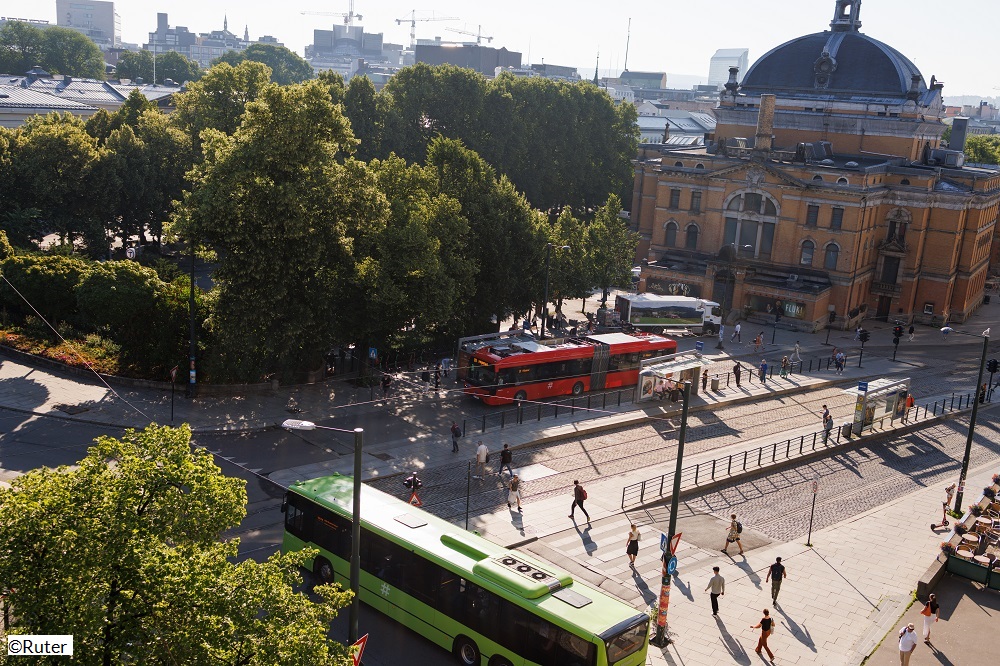Automated mobility is no longer the newest kid on the block, but is only slowly outgrowing infancy. Level 4, the status of automated driving without any human operator on board, isn’t yet realised in Europe on a larger scale.
Within the ULTIMO project, 23 partners from eight countries work together to push the boundaries of automated driving to Level 4 and to realise commercially viable services. In the project, automated transport services will be deployed in three European cities, each with fleets of at least 15 vehicles covering all mobility needs in a Mobility as a Service (MaaS) setup. Our vision? To provide Mobility for All, also for those with reduced mobility, all without the need to own a car.
This vision is not uncontroversial, as a recent exchange in Norway has shown. The debate was sparked by the launch of ULTIMO’s first deployment site in Oslo by public transport authority Ruter. In the discussion, the self-driving car project was criticised by a political party as:
- a waste of time and funds
- as a service that does not address people’s real transportation needs
They called automated transport
- in no way accessible to everyone
- the cause of job losses for bus drivers.
They recommended that Ruter should focus on improving the existing public transportation system and should invest in more capacity instead of investments in self-driving vehicles. These arguments can be valid. Not only ULTIMO is addressing them.
At ULTIMO we don’t shy away from discussion, and the situation actually provided a good opportunity to explain our vision to skeptical politicians and important stakeholders – first by an employee of Ruter, after even by the Oslo City Council. Their arguments illustrate what drives us at ULTIMO.
We are working towards a world in which people no longer need cars. Instead, a good public transport system takes us wherever we want. For that goal, strengthening traditional scheduled public transport services might not be sufficient. Here efficiency also plays a role: for suburban or rural areas large mass transit might not be the best option. Instead, we need to create new services that complement public transport and that are on-demand, serve as mobility-gap fillers, and are easily accessible. Instead of replacing public transport, Public Transport Operators (PTOs) and Public Transport Authorities (PTAs) like Ruter are strengthening the public transport system, covering areas that could otherwise only be reached by car. Within ULTIMO, we believe that self-driving vehicles can be a perfect tool to reach these objectives.
There are strong reasons for our belief:
- AVs can complement and improve existing means of transport, offering a true alternative to the private car at an affordable price. They can provide door-to-door service when other transport services are not running anymore, or in rural areas. In our vision, AVs don’t compete with public transport.
- Automated driving makes travelling more comfortable and safer (over 90% of road traffic accidents are due to human error1)
- The vehicles can be customised to the needs of different target groups, including the elderly and people with disabilities (for instance, wheelchair accessible vehicles are sent to those who need them)
- The option of booking on-demand journeys can provide the same liberty as initiating a drive with a private car. Citizens are free to choose, and a change in mobility patterns will be achieved by providing a better offer (not by coercion)
- Automated driving is also a solution to the shortage of drivers that is already hindering the development of public transport in many cities around Europe2
- AVs are simply good news for the planet. When integrated into the public transport system, they could take every citizen to their destination with fewer cars, drastically reducing carbon emissions and congestion in cities.
Furthermore, a substantive part of funds for innovative projects such as ULTIMO come from the European Commission, who is a strong believer in automated mobility and whose support is pivotal for making our green vision a reality.
In fact, cost-efficiency is another compelling argument pro-AVs: at the forefront of shared mobility services are the PTOs with a clear mandate: ensuring a high quality of service and the best safety of passengers and other road users, while optimising their operational costs. Automation offers opportunities in these three areas by alleviating the strain on bus driver wages, which is often correlated with personnel shortages in many countries. This is particularly beneficial for costly social services such as Demand Responsive Transport (DRT), also known as paratransit. The resulting cost savings can then be redirected to areas underserved by public transport, enhancing service frequency and safety.
In short, when used as shared vehicles that are integrated into an effective public transport network or MaaS, automated vehicles can be a key solution to create healthier and more competitive and sustainable cities. They can make public transport more flexible, providing affordable services at places where it wasn’t possible before. Thus, AVs can drastically reduce car ownership and regain essential urban space.
Within ULTIMO, we dare to see automated driving as a new opportunity and a fitting solution to create better mobility for all. For a future where roads and car parks are freed up and given back to the people.

